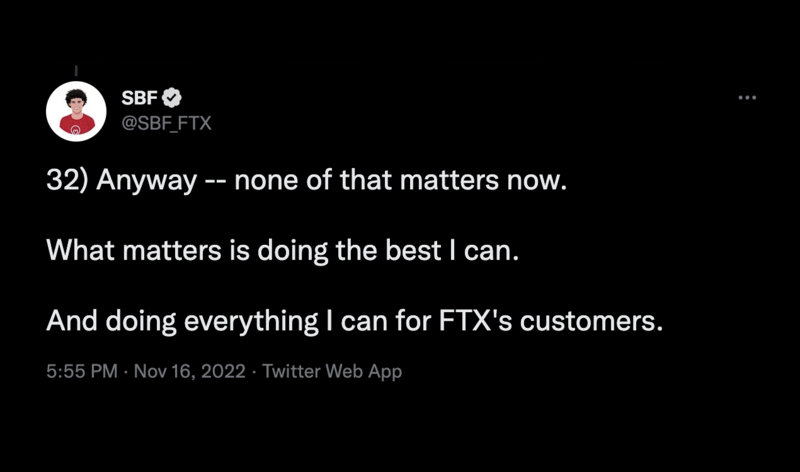According to a guy that’s seen the darkest side of the corporate world, the business practices of fallen crypto exchange FTX are about as bad as it gets.
What happened: John Ray III, an insolvency expert who oversaw the liquidation of energy giant Enron and was appointed CEO to oversee FTX’s bankruptcy proceedings, wrote in a filing that FTX was “the worst case of corporate failure that he had seen in his career.”
Catch up: FTX filed for bankruptcy protection in the US last week in the highest-profile crypto blowup to-date, after “traders pulled billions from the platform in three days and rival exchange Binance abandoned a rescue deal,” per the Financial Post.
- FTX founder Sam Bankman-Fried (SBF) also may have illegally used US$10 billion in customer funds to trade stocks and crypto through his firm, Alameda Research.
“From compromised systems integrity and faulty regulatory oversight abroad, to the concentration of control in the hands of a very small group of inexperienced, unsophisticated and potentially compromised individuals, this situation is unprecedented,” Ray III wrote.
It gets worse. FTX also didn’t keep an accurate list of its bank accounts or employees, auto-deleted its internal messages, used an unsecured email to manage the security keys for its digital assets, and approved staff purchases (including houses) by using emojis.
Why it matters: The collapse of SBF’s crypto empire has sent shockwaves through the ecosystem, bankrupting some crypto businesses and forcing many others into crisis mode.
- BlockFi, a lender in the crypto space bailed out by FTX earlier this year, is planning to file for bankruptcy in the coming days.
- The lending arm of Genesis Global Trading, a crypto investment bank, has stopped giving out new loans and paused redemptions.
What’s next: It will take weeks to know the full impact of FTX’s demise, according to Coinbase’s CFO, but so far, the crisis hasn’t impacted any traditional parts of the economy.
